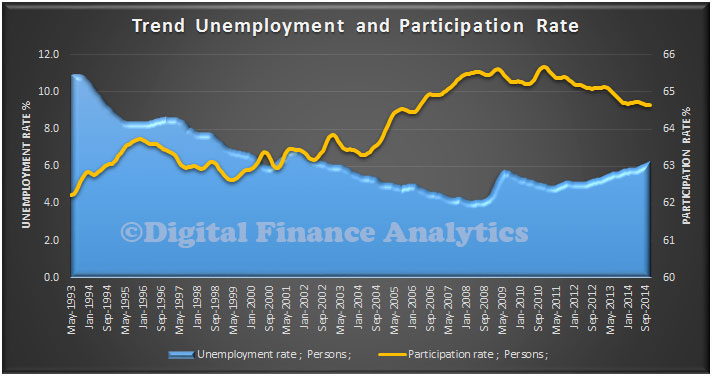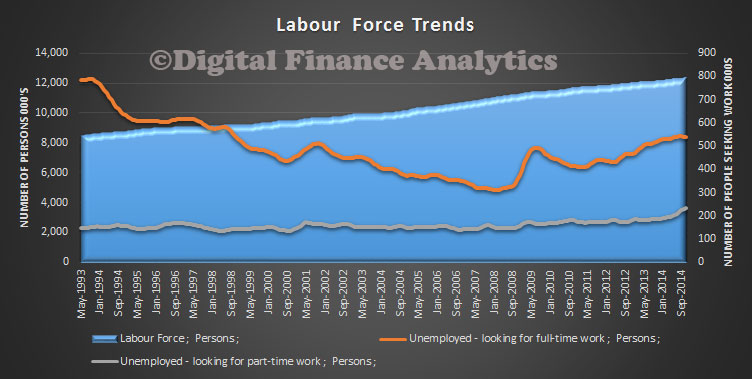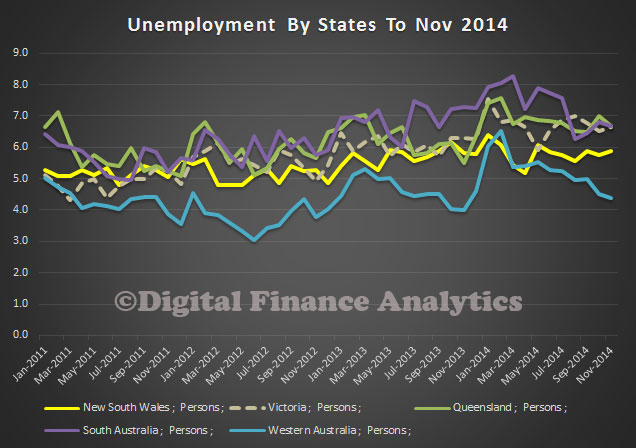The ABS data today can be read a couple of ways. It was the highest rate of unemployment for more than 12 years but also the strongest growth in jobs since early 2012. The movement in the month was only 0.01%, from 6.25% to 6.26%, so it rounded down last month to 6.2%, and up to 6.3% this time. Given the ABS sample size, the 1% change in the result is potentially overstating the true picture.
 Overall, the number of people employed rose by 42,700, against analyst expectations of 15,000. In addition, the participation rate rose slightly from 64.6% to 64.7%.
Overall, the number of people employed rose by 42,700, against analyst expectations of 15,000. In addition, the participation rate rose slightly from 64.6% to 64.7%.
 Of the 40,000 jobs created in the month. more than 36,400 were part-time positions for women, while total full-time employment rose by just 1,800 jobs. The aggregate monthly hours worked dropped 4.4 million hours, or 0.3%. As we showed in our earlier post, there are some significant state variations. WA is helping to keep the all Australian averages lower. As mining continues to slow, will this continue?
Of the 40,000 jobs created in the month. more than 36,400 were part-time positions for women, while total full-time employment rose by just 1,800 jobs. The aggregate monthly hours worked dropped 4.4 million hours, or 0.3%. As we showed in our earlier post, there are some significant state variations. WA is helping to keep the all Australian averages lower. As mining continues to slow, will this continue?
 So mixed messages in the data, assuming the seasonality issues have been sorted out. But the longer terms trend data is quite clear. Participation rate has fallen from 2011, the unemployment rate is higher (especially for younger and older Australians) and those looking for part-time or full-time work are growing faster than the working population.
So mixed messages in the data, assuming the seasonality issues have been sorted out. But the longer terms trend data is quite clear. Participation rate has fallen from 2011, the unemployment rate is higher (especially for younger and older Australians) and those looking for part-time or full-time work are growing faster than the working population.
